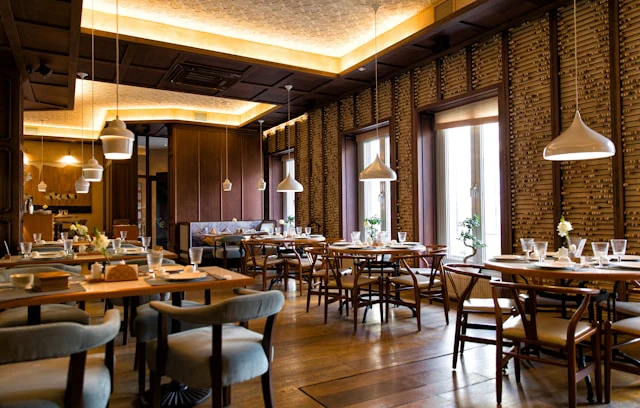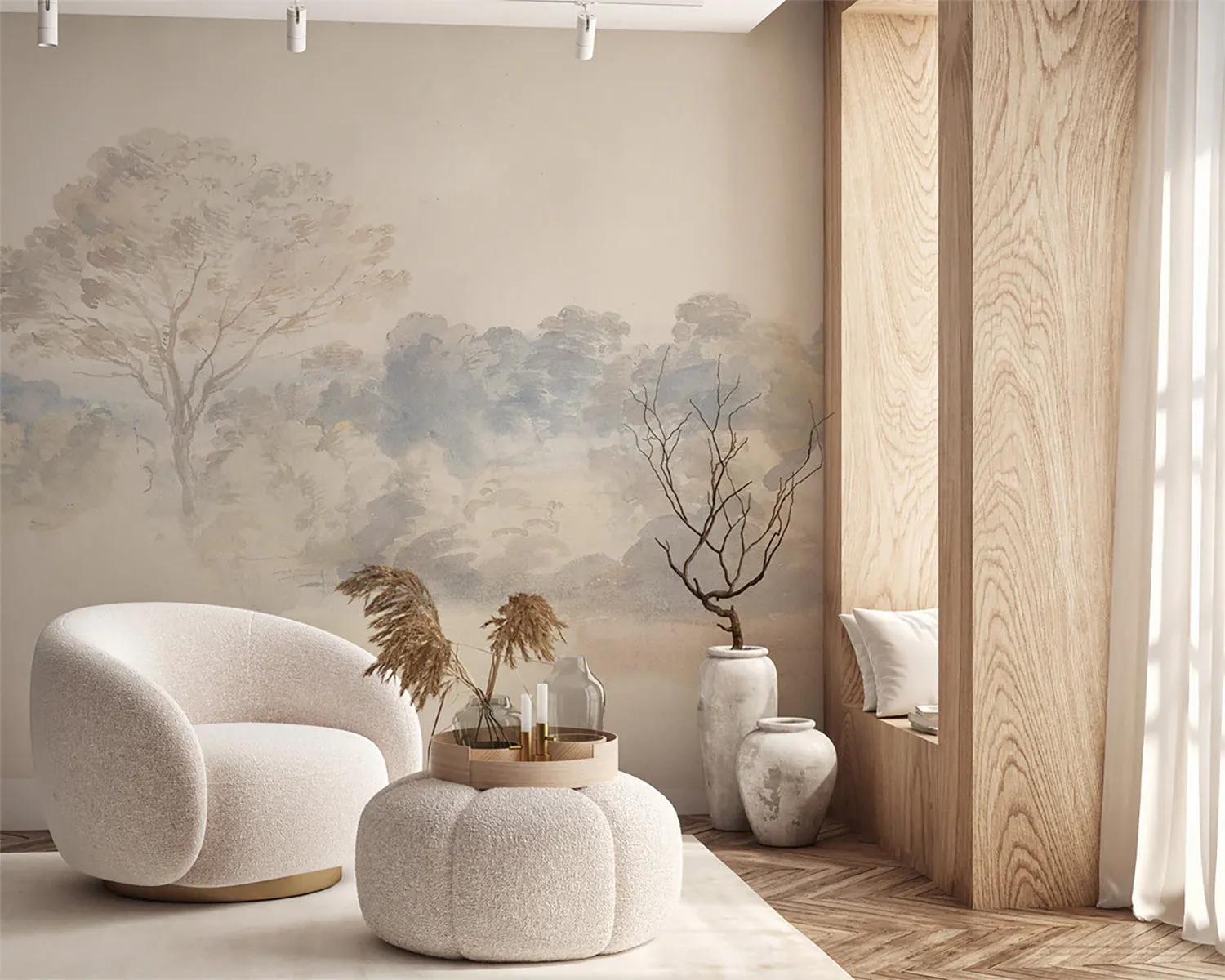Ambient Intelligence: Commercial-Grade Restaurant Furniture That Adjusts to Mood, Foot Traffic, and Ambient Sound

Step into a restaurant where the furniture is no longer silent. Chairs sense how long you have been sitting and shift to keep you comfortable. Tables cast a glow that matches the mood of the evening, and booths soften the chatter around you so you can hear your company. It feels effortless, almost alive. That is ambient intelligence at work.
The appeal is easy to understand. Guests want more than food; they want an atmosphere that wraps around them. Surveys show more than half of diners value ambiance that is created by quality restaurant furniture as much as the meal itself. With the global ambient intelligence market projected to jump from 18 billion in 2022 to nearly 100 billion by 2030, restaurants have good reason to pay attention.
Hospitality Reimagined
Ambient intelligence goes beyond gadgets that simply follow orders. It creates entire environments that notice, interpret, and respond. This is a shift from switching on a light to having the room itself understand what you need.
Hotels and advanced office spaces have already set the pace, offering lounges and lobbies that adapt in real time. Restaurants are now weaving the same intelligence into their design. With annual growth topping 24 percent, the spread is rapid. Staff benefit from smoother workflows, while diners enjoy a setting that feels naturally tuned to them.
Mood in Motion
Lighting has always influenced dining, but here it becomes dynamic. Imagine a table with LED edges that pulse gently during a lively evening or dim softly as guests linger over dessert. Chairs, too, are evolving, adjusting firmness through hidden pressure maps to keep guests at ease without interruption.
Booths go further by absorbing sound when the room grows louder, ensuring conversation does not become a struggle. Research suggests mood-responsive lighting can increase dwell time by 15 percent. That means more time, more orders, and a deeper emotional connection to the restaurant. These subtle touches also strengthen a restaurant’s personality, linking ambiance directly with identity.
Shaping the Flow of the Room
Restaurants thrive when every inch of space works hard. Smart furniture helps make that possible. Occupancy sensors inside chairs and tables track foot traffic patterns, giving managers live insight into how space is used.
Picture peak hours: modular tables sliding together to seat a large party, or booths contracting to free space for new arrivals. Unused corners dim automatically, saving energy while focusing staff attention where it is needed most. Studies show this kind of optimization can lift seating capacity by 10 to 20 percent. For guests, the result is freedom, privacy when desired, or vibrant communal spaces when that suits the moment.
Taming the Noise
Noise has always tested restaurants. Guests list it among the top three complaints, whether dining casually or formally. Ambient intelligence offers fresh answers. Booths lined with acoustic panels soak up chatter before it overwhelms.
In some spaces, partitions rise quietly when volume climbs, carving out instant calm. Even lighting joins in, syncing to music to create harmony rather than conflict. These solutions do more than lower decibels; they shape how the sound feels. A balanced room feels more inviting, encouraging diners to stay longer and enjoy themselves.
Craft and Material Innovation
Behind these transformations are new materials. Smart polymers and adaptive fabrics give chairs the flexibility to respond to posture and comfort needs. Fabrics now resist noise and bacteria while still carrying refined design appeal. Even wood can conceal tiny sensors that track usage while maintaining its natural warmth.
Some surfaces change slightly with touch, giving an impression of freshness and cleanliness. Others embed wireless charging or soft LED accents. Sustainability runs through these choices too, with eco-friendly finishes gaining popularity. Durability, easy care, and adaptability make these materials not just futuristic but practical for daily service.
The Business Case
Owners are discovering that these systems do more than impress. Guests who feel cared for spend more and return often. Adaptive layouts mean fewer staff are needed for constant adjustments, and energy savings reduce costs over time. Just as important, being seen as a high-tech dining spot creates a powerful marketing edge.
Numbers tell the story clearly. Smart hospitality systems are expected to grow from 23 billion dollars in 2024 to nearly 75 billion by 2029. Data captured by these systems also allows for tailored promotions, encouraging loyalty and upselling. While the first investment may be steep, the long-term rewards are significant.
Hurdles Along the Way
There are obstacles to address. Privacy is one, since these systems depend on collecting data. Restaurants must use the information responsibly to maintain trust. Another is balance. Technology should complement hospitality, not overshadow it, because warmth and human touch remain central to the dining experience.
Technical failures can also disrupt service, especially at peak times. Smaller restaurants may find costs harder to manage, even with the promise of savings later. Training is vital so staff can handle new tools with confidence. Security too demands attention, as connected devices need strong protection. Tackling these issues ensures the technology works smoothly in real service.
Tomorrow’s Dining Landscape
Looking forward, the possibilities expand. Costs will fall, making intelligent furniture available to more restaurants. These systems will not only react instantly but also learn over time. A chair may remember a regular guest’s preferred firmness, or a booth may adjust lighting to match their past choices.
Dining rooms could shift styles throughout the day, offering bright, casual lunches and soft, elegant dinners without manual redesign. Augmented reality menus and interactive tables are on the horizon. Analysts expect the smart furniture market to exceed one billion dollars soon, while ambient intelligence overall nears 100 billion by 2030. Robotics may even combine with these systems, offering layouts that move on their own or seating that delivers food. Subscription-style ambiance themes could become the next innovation, giving guests fresh experiences on repeat visits.
Closing Thoughts: Dining That Responds
Restaurant furniture is stepping into a new role. No longer just a backdrop, it now shapes mood, manages flow, and balances sound. These adjustments may go unnoticed at first, but guests feel them as comfort and care.
For owners, the value lies in savings, revenue, and reputation. For diners, it is about feeling that every detail is considered. As restaurants embrace ambient intelligence, they create spaces where hospitality becomes responsive, adaptive, and truly memorable. The dining rooms of tomorrow are not only places to eat but places that quietly think with you.




